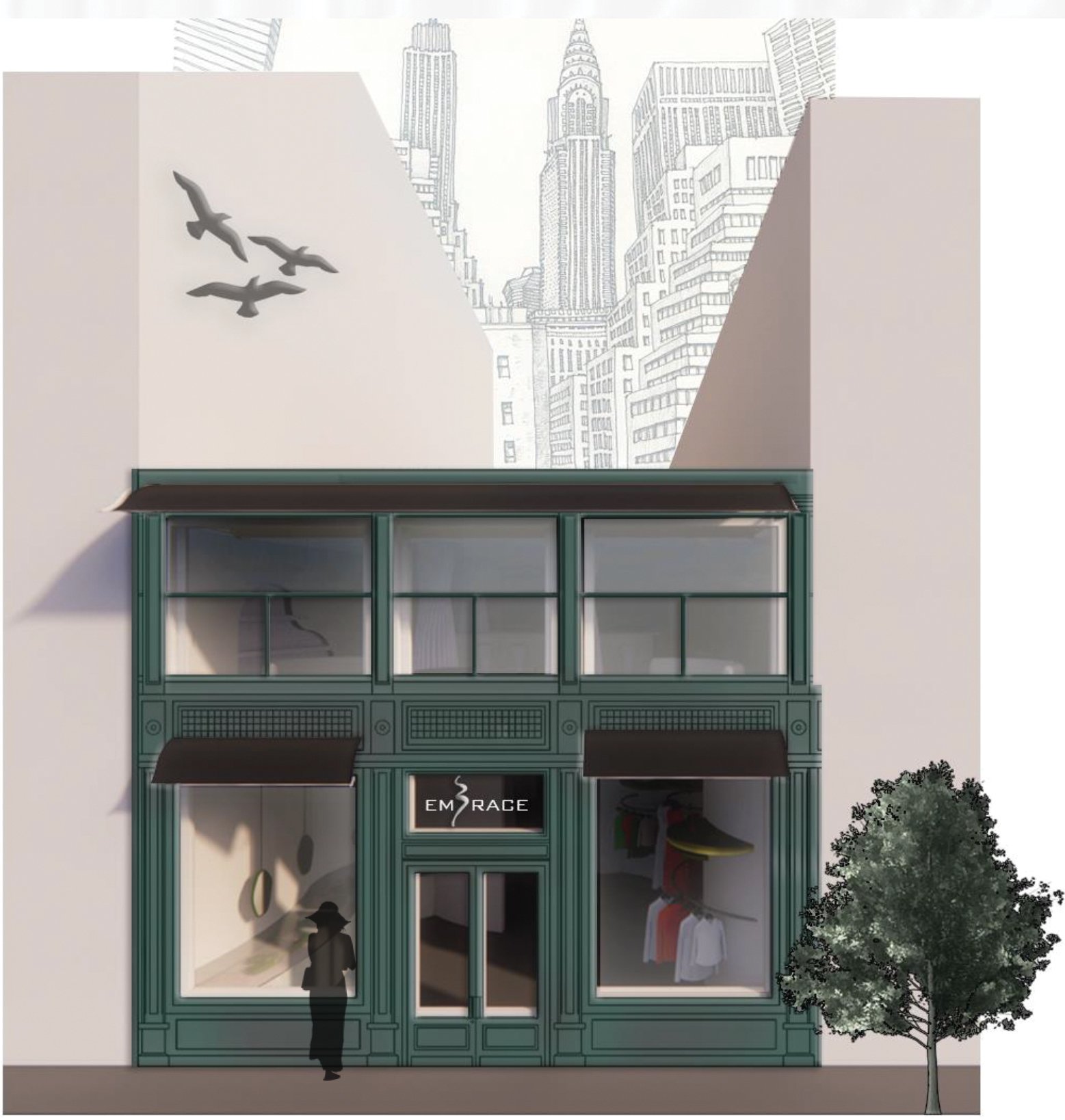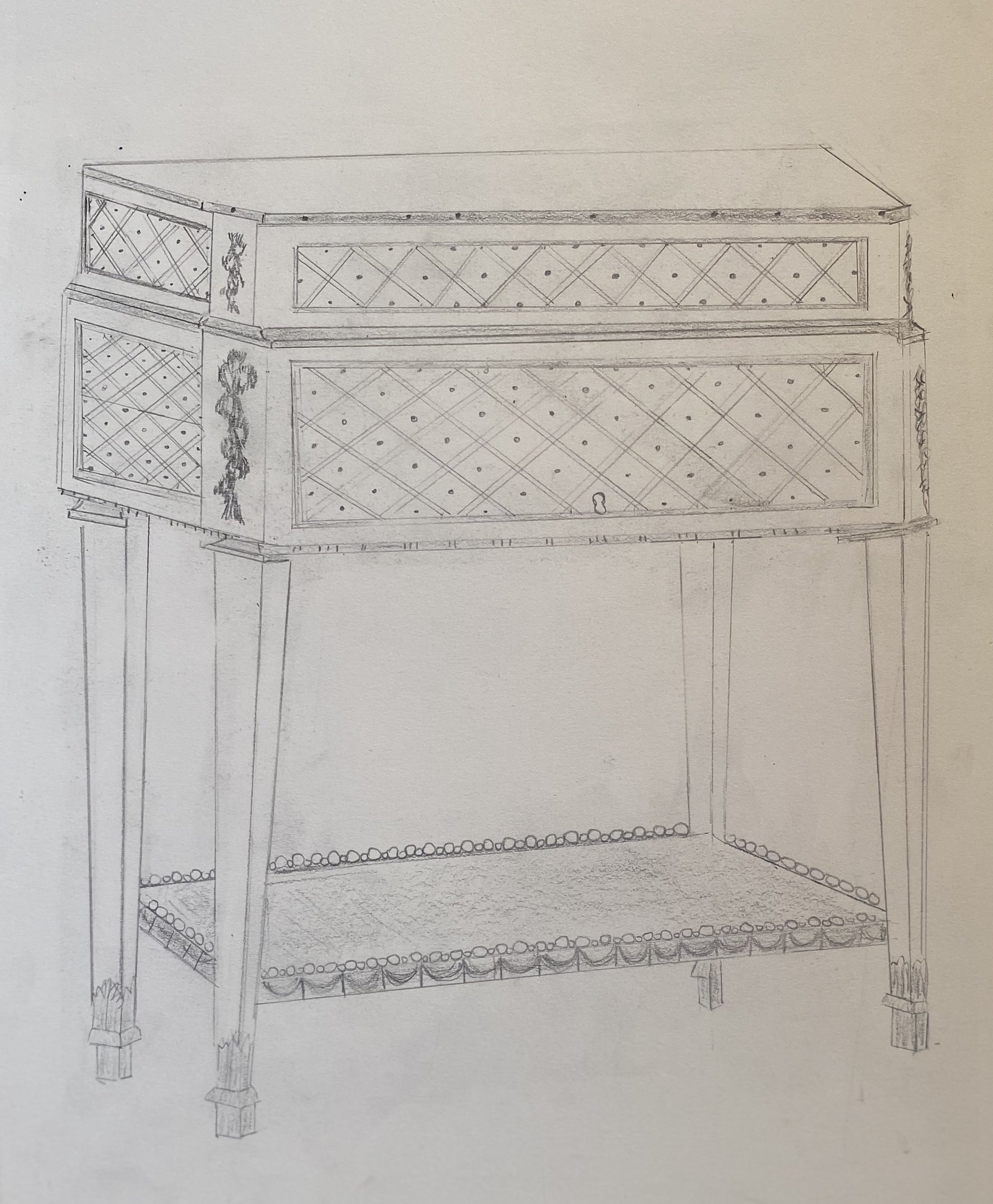The Struggle is Worth It
NYSID Students on Juggling, Parenting, Higher Education, & a Creative Life
Shruti Kashikar (MFA1 student), Ryan Biggs (BFA, ’21), and Dalia Cunow (BID student) are parents of young children who set out to reinvent themselves through a NYSID education. They say simultaneously parenting and studying at NYSID is challenging, and worth it. Here are their insights, along with those of Penni Morganstein, PsyD, NYSID’s director of counseling services.
During the spring 2020 lockdown, the editors of this magazine started using Zoom to interview NYSID students and noticed that some of them had children in the background (or in their laps). The first wave of the pandemic was a period of extreme challenges in childcare, yet these interactions highlighted the fact that a portion of the NYSID community is always juggling the demands of a NYSID education and the needs of their children. Seventy percent of students in NYSID’s undergraduate and graduate programs are people with degrees in other disciplines who are going back to school to forge a new career. These students are often embarking on a new career in their late 20s or early 30s, at the same time of life when they are finding partners, and in some cases, adding to their families.
As abundant digital and distance learning options become business as usual at the College in the wake of the “Zoom Boom,” the dream of a higher education in design is getting more attainable for people with young children. NYSID began offering a fully online BFA, accredited by the Council of Interior Design Accreditation, in fall of 2021. The MPS in Sustainable Interior Environments and the MPS in Lighting Design both can be pursued fully online, and every degree program at NYSID has many online course options. As the students in this article will tell you, these digital options are a boon for parents with limited time.
Yet, with more access to learning from home and the constant temptation to multitask on a phone, creating clear boundaries between one’s school life and family life can be a challenge. Penni Morganstein, PsyD, NYSID’s director of counseling services, believes that mindfulness, specifically the ability to give one’s full attention to the task at hand, is a key to getting more satisfaction from a life in which one has to juggle multiple roles. “You have to get prepared, so you can be present in the moment,” she says. “If you are attuned to your child and their needs, you are less likely to feel guilty when you step away and do what you need to do for school. And when you are able to focus on designing, you do your best work. When you are half in on everything, that’s when the problems might start.”
Morganstein explains that the first and most important step is lining up “rock-solid” childcare for your school and study time, and if that childcare comes from a family member, making sure that person understands they will be needed for set hours every week. She suggests mapping out a schedule in advance so you can pay more attention in the moment. Morganstein has a great technique for setting up psychological boundaries between school and home life. She says, “Treat walking (or commuting) from school as a silent meditation to prepare yourself for the transition to home. Use the downtime to listen to a meditation, so when you walk through the door, you are ready to transition into the next phase of your life.” She says that the apps Calm, Headspace, and Koru Mindfulness are all good resources for practicing meditation. She also wants all NYSID students to know she is a resource for them if they feel overwhelmed or just want guidance. (She can be reached at Penni.Morganstein@nysid.edu.)
What the parent-students on these pages are accomplishing takes planning and perseverance. We hope their insights are a resource for those hoping to nurture a creative career and raise humans at the same time.
Shruti Kashikar
Shruti Kashikar and son. Below: Kashikar’s “Embrace” retail project for Studio III
Third-year MFA1 student, mother of two
“It’s important to me that you don’t present me as this person who has it all together,” said Shruti Kashikar, when we sat down at the end of her second year in the MFA1. “Juggling what amounts to two ‘jobs’ sometimes can feel like a circus, and I want other parents to get a real picture.” Indeed, Kashikar, the mother of an almost 2-year-old girl and a 5-year-old boy, does seem like something of a supermom. She is the graduate assistant of Christopher Vinger, NYSID’s director of institutional research. Even during the pandemic, she managed to get hands-on design experience, assisting Virgina Toledo of Toledo Geller in the Kaleidoscope Project showhouse in the winter of 2021. She entered the MFA1 program in 2020 right after giving birth to her second child, when her baby was four months old. Before applying to NYSID, she worked as a professor of oral pathology at Rutgers University. Design was her dream, but since both of her parents are in the medical profession, she didn’t have models of creative careers growing up. Kashikar, who immigrated from India as a child, says, “Applying to the program while pregnant, I knew it would be difficult. But you can’t stop life when you have kids. My parents are immigrants, and so am I. They taught me that if you want to achieve something, there’s always a sacrifice. There have been many sacrifices. But I keep my goals in mind.” Her best advice for student-parents follows:
Form Your Own Village
Kashikar’s parents are doctors, so before Covid vaccinations, they could not see the children, and one of her major sources of weekend babysitting evaporated. She quickly learned to seek out support from other parents. She says, “Set up playdates. Ask other moms to help you. Create an exchange of childcare. A few hours here and there make a huge difference, and let you get the work done.” Kashikar employs a babysitter during the weekdays, and she can’t imagine finishing her degree without this level of support. She says, “Children benefit from a collage of caretakers.” She explains that another aspect of her “village” is the other moms in her MFA1 cohort. “Once you find another mom in the program, there is a connection. They understand what your life is like. My two ‘mom-friends’ in the MFA1 have older children, and they have been a big source of emotional support.”
Online Courses Are Amazing
Says Kashikar, “During the lockdown when NYSID was totally remote, I found the education was equally good online, even the studios. The online format allows for a lot of feedback from teachers and peers, and weirdly, my remote courses have felt even more communal than the in-person ones.” She adds, “Online courses are better for parents because they remove the commute. They allow you a little more time to get things done. The recorded [aka asynchronous] lectures let you pause, go back, and slow down to absorb the lessons at your own pace, after the kids are in bed.”
“Good Enough” Needs to Be Fine Sometimes
Kashikar is an achiever. She says, “One of the things I struggle with is that I don’t have enough time to make my projects perfect, or the ultimate. There are students in my program who spend every hour of the weekend producing a project. I have to say to myself: Last night my daughter was sick and I had to drop everything, so my project will have to be good enough. I learned not to beat myself up over this.”
Share Your Passion with Your Children
Kashikar gets some of her best ideas when she sits down and draws with her 5-year-old son. She involves him in interior design tasks. She says, “It’s important to me that my children understand that things are not just given. You have to work for them. It’s also important for them to experience joy and creativity with me.”
Ryan Biggs and son. Below: Renderings by Ryan Biggs
Ryan Biggs
Recent graduate, father of a toddler
When we spoke with Ryan Biggs, he was finishing his last semester at NYSID and in the end stages of his thesis. (He completed his degree in December of 2021.) If there’s one quality that defined Biggs as he graduated from NYSID, it was gratitude. Interior design will be his third career: He previously worked as a chef, and in the military as a translator on a naval submarine. “I was dating my wife when I entered the BFA in 2018, and she was very supportive of me going. We got married while I was in the program and decided to have a baby because I was 36 and I didn’t want to wait any longer,” he recalled. “My wife has worked full time—really insane hours—so that I could study and care for our son in the daytime. I am so thankful. My life has been amazing since I met my wife.”
Before he even graduated, Biggs was hired by Splice (a workplace management firm) to do space planning for the interiors of a major corporation. His family—his wife and now-2-year-old son, Redmond—was in the process of moving to Seattle for his new job. His thesis advisor, Robert Dadras, was working with him remotely so that he could finish and present his thesis to his jury digitally, from a distance. (NYSID became more flexible and adaptive to student’s needs through technology during the pandemic, so virtual presentations have become an option.)
Biggs feels it has been a blessing to stay home for a portion of the day and spend time with his son during the first year of his life, but it hasn’t always been easy. He shares his advice here.
Follow a Strict Schedule
“It comes down to keeping a routine,” says Biggs. “My son is very oriented to our schedule. In the morning, I take care of him until the second shift, when family or our babysitter comes in the afternoon. My time to design is 7 p.m. to 11:30 p.m., and I protect that time. I miss social things like dinners out and birthday parties, but I keep my goals in sight.”
Be Scrappy About Funding
Biggs had a paid internship lined up when the first wave of the pandemic hit New York City. He and his wife moved with their newborn out of New York City, to his sister’s house in Massachusetts, because they were terrified for the baby’s safety. The paid internship possibilities disappeared, and there was a gap in funding for the family. Biggs applied for a number of scholarships, and was awarded NYSID’s Albert Hadley Scholarship, which made the continuation of his full-time education possible. At the time of this interview, he was entering the Bienenstock Furniture & Interior Design Competition, with first-prize money of $5,000. “If this is your dream and funds are an issue, do the research and be scrappy about funding,” he says.
Ask for Help & Show Gratitude
“Don’t be afraid to ask for help,” says Biggs. “Your friends and family, they love you and will help you so much. They want you to achieve. They want to be part of your kids’ lives. I never used to call my mom, and now I call her every day because I want her to see my son every day and for my son to know his grandmother.”
Dalia Cunow
BID student, mother of three
Dalia Cunow and family. Below: Elevation drawing and sketch of a Louis XVI desk by Dalia Cunow
Dalia Cunow was raising three small children and working as the women’s creative director for Onia, an apparel company her husband co-founded, when she began to feel like she needed “something that was just mine and didn’t have to do with anyone else in the family.” She already has an MA in psychology from Columbia University, but she wanted to move forward in a creative field. She got a bit of interior design experience helping a friend remodel a loft in SoHo, but felt she needed formal training, so she applied to NYSID’s BID (Basic Interior Design) certificate program and got in. She has a 3-year-old, 5-year-old, and 7-year-old, and she is still consulting with Onia, so she decided to go to school part time. “It would have been really hard for me to commit to going full time for a 2- or 4-year degree with so much going on,” she says. “The BID seemed like a good place to start because it stacks into the AAS and the BFA. I knew if I wanted to move on to get the next degree, that was something that could happen.” She was fastidious about making a plan before she jumped into classes. She met with her NYSID academic advisor, Shell Azar, and took away the impression that the design history courses are the best classes to take online, and drafting and studios might be the better courses to take in person. She set up a schedule in which she comes on campus to study on Mondays, and studies or works from home on other weekdays.
Be Prepared / Line Up Help
“I do have a regular babysitter and I feel very thankful I can do that,” says Cunow. “Even as we speak, I am game-planning about who is going to pick up whom. I absolutely need an extra pair of hands to get it all done.” She adds, “You need a good support system and I know I am privileged to have mine. My husband has been supportive, and he’s excited for me. He takes the kids out on Sundays so I can get my schoolwork done.”
Keep Moving When the Plan Falls Apart
“Look, I have a very set schedule but sometimes the kids get sick and it falls apart,” Cunow muses. “You have to be able to be flexible. You must accept that you are doing the best you can. It’s not subpar. It’s something to be proud of. I keep it moving. You have the time you have, and you do your absolute best in that limited time. You sometimes have to let go of the perfect schedule. If you remember that, you will get it done in the end.”











